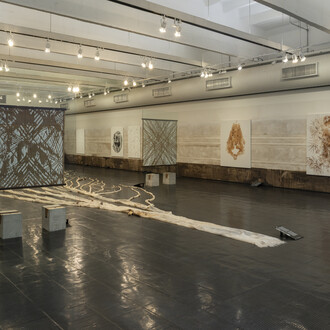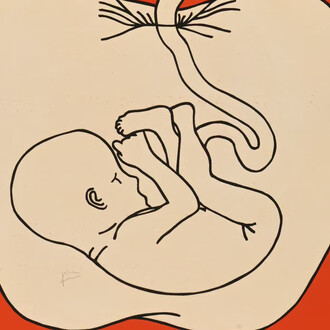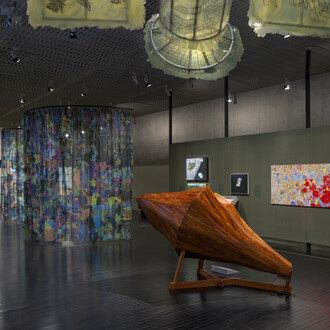He kissed me on the mouth and told me
Life is as hollow as the hat of a headless baby
And I laughed like hell
And he was like a drunken foxhole
And I said, enough of your talk
Of this bottomless pit
I know that the world
Is a stream without a bed and it's only in the hollow of its chest
That a river flows(Caetano Veloso, 1982)
In times of so much repetition, reproducibility, and disposability, there are few Brazilian artists who manage to build a trajectory that runs counter to the immediate demands of the market or more fashionable social issues. Adriano Costa (São Paulo, 1975) is one of them, precisely because of his rare appreciation for not particularizing the art debate around the immediacy of certain themes and histories. His politicization (of an aesthetic nature, by the way) is more subtle and appears when the works are shown together in the exhibition space, in the suggestion of their titles, and in the images that emerge from each exhibition.
On the one hand, it is possible to anchor his production in the experimental and ecological verve of Hélio Oiticica and the irony and radical use of materials of the Geração 80, from Paulo Monteiro to Leda Catunda. It could be said that his production is rooted in this tradition. On the other hand, there is a strong dialogue with the international productions in vogue, such as some of the practices of the German Isa Genzken and the US artist Paul Thek, among others. These indirect links can be said to come from his constant contact with current production, a kind of perspective of presence in the face of what has been conceived in the creative universe of contemporary art.
As is well known, Adriano has gradually asserted his production in an international context: he follows an institutional circuit, often in residency programs or group exhibitions dealing with historical themes and processes, in addition to participating in the private circuit of galleries and independent spaces. Although he usually organizes the exhibition with distinct and independent works, the intercommunication that is established on site between the works and the space gives his production an amplified meaning. He never loses sight of this. In a way, it can be reductive to think of his works only as autonomous devices, detached from an exhibition context. However, it is part of his work to understand how each of the elements distributed in a given architectural space can generate a better dialogical relationship with the public.
From a public education at the School of Communication and Arts of the University of São Paulo, to working in a broader global context, without necessarily representing the label of Brazilian or Latin American artist, he remains steadfast in his intuitive purpose to bring the outside world into the inner universe of his art. In this purpose, we can also include a look at the reverberations of someone who has lived the cultural nightlife of São Paulo. And this is one of the possible themes of 1 metro de cabelo [1 meter of hair].
(Text by Diego Matos)
















